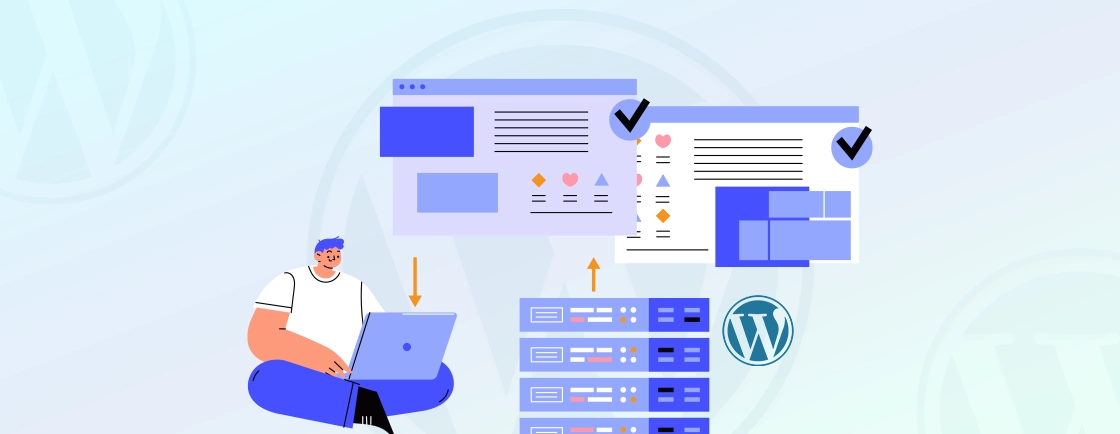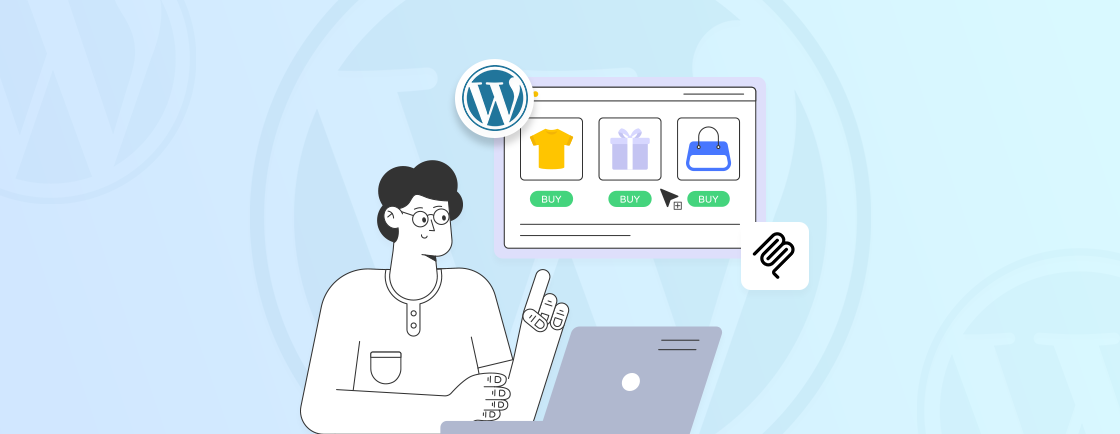Table of Contents
Creating and publishing a page on WordPress is an essential skill for anyone managing a website. Pages, unlike blog posts, serve as the backbone of your website, providing essential information and guiding visitors through your content.
In this guide, we’ll walk you through the step-wise process of publishing a page on WordPress. We’ll start by how experts create a page, then customizing it and finally publishing and managing it. So, with that, let’s start from understanding what pages are in WordPress.
What is a Page in WordPress?
In WordPress, a page is a static piece of content that remains unchanged over time. It’s typically used to provide essential information about your website, such as:
- About Us: Details about your company, mission, and team.
- Services: A page outlining the products or services you offer.
- Contact Us: Information for contacting your business, including address, phone number, and email.
- Portfolio: A page showcasing your previous work or projects.
- Privacy Policy: Legal information about the site’s privacy practices.
Unlike blog posts, which appear in chronological order, pages are usually listed in a website’s navigation menu. They can also be organized hierarchically, with child and parent pages. Each page can have a featured image, so understanding the ideal WordPress featured image size ensures it displays correctly across your site and maintains a consistent, professional appearance.
Characteristics of a WordPress Page
A WordPress page has several characteristics that distinguish it from other types of content, particularly posts. Here are the key characteristics:
- Static Content: Unlike blog posts, which are typically dated and organized by categories or tags, pages are meant to be timeless. They are used for content that is generally not updated frequently.
- Hierarchy and Structure: Pages can have a template hierarchical structure. For example, you can have a parent page with subpages. That allows you to organize your content in a nested format.
- No Categories or Tags: Pages do not use categories and tags. Instead, they are usually organized through the menu structure or hierarchical relationships.
- Menu Integration: They are often included in the site’s navigation menus, making them easily accessible to visitors.
- Template Options: Pages can be assigned different templates that control their layout. WordPress themes often provide various templates for different page types.
- Page Attributes: You can set attributes like parent pages and order, which help in structuring your site’s hierarchy.
By understanding these key characteristics, you can effectively use pages to create a well-structured and informative website. If you want more customized and responsive pages built, consider finding WordPress developers for hire who have the right skills.
How to Publish a Page on WordPress?
Publishing a page on WordPress is straightforward. Once you’re in the block editor, you can add text, images, or other content blocks as needed. For example, if you want to include documents on your page, you can easily upload PDFs to WordPress and then publish them within your content so visitors can access them directly.
To make your content more visually appealing, you can wrap text in WordPress around images or other elements before publishing. This flexibility allows you to create rich, engaging pages with a combination of media, text, and well-formatted layouts.
Step 1: Log into your WordPress admin area by visiting yourdomain.com/wp-admin and entering your username and password.

Step 2: Once logged in, go to the WordPress dashboard. Click on Pages > Add New button at the top of the pages screen or within the pages section of the dashboard.

Step 3: You will be taken to the WordPress block editor (Gutenberg Editor), where you can begin creating your page. Enter title and content:
- Title: Add a title for your page in the title field.
- Content: Enter your page content in the block editor (Gutenberg) or classic editor.
You can use blocks for text, images, videos, and other content types in the block editor.
Step 4: Click on the “+” button to add blocks such as paragraphs, images, headings, and more. You can customize each block with various settings and formatting options.
Step 5: If you’re using the Classic Editor, use the WYSIWYG (What You See Is What You Get) editor to format your content.

Step 6: Before publishing, you can preview your page to see how it will look on your site. Click the Preview button in the top-right corner of the editor. Make any necessary changes based on the preview.

Step 7: In the Publish meta box, choose the visibility of your page:
- Public: Visible to everyone.
- Private: Visible only to logged-in users.
- Password-protected: Visible only to users who know the password.
Step 8: To make the page live immediately, click the Publish button. If you’re not ready to publish, you can save your page as a draft by clicking Save Draft.

Step 9: If you want to publish at a future date, click on Immediately under the Publish section, then set your desired date and time. Click Schedule.

Once you click on the Publish button, a calendar will appear to choose the date and time of publishing page.
Step 10: Access published pages through the Pages menu in your dashboard. To unpublish, change the status to Draft or Private. To delete, select the page and click Trash.

With these, we have learned how you can create, preview, update, publish, and manage pages in WordPress. If you want more customized development of your page, you can consult with a WordPress development company.
Wrapping Up
Publishing a page on WordPress is a straightforward process. But understanding the options available can enhance the impact of your content. The options include features like, managing visibility, scheduling, or optimizing them for SEO that provide you more targeted reach.
By creating a page that is interactive and making users navigate clearly, you can enhance the visitors’ experience. If you are looking to build a highly customized page or need a complete site development, you can get in touch with our experts!
FAQs About Publishing a Page on WordPress
Can I edit a page in WordPress after it has been published?
Yes, you can edit a page at any time. Simply navigate to the Pages section in the WordPress dashboard, find the page you want to edit, and make your changes. Don’t forget to click Update to save the changes.
How do I save a page in WordPress without publishing it?
You can save your work as a draft by clicking the Save Draft button in the top-right corner of the editor. This allows you to continue working on your page later without making it public.
How do I make a WordPress page private or password-protected?
You can make a page private by selecting the Visibility option in the Publish settings and choosing Private. For password protection, select Password Protected and set a password that visitors must enter to access the page.
Create with WordPress CMS
Build flexible and scalable websites using WordPress's powerful content management system.





